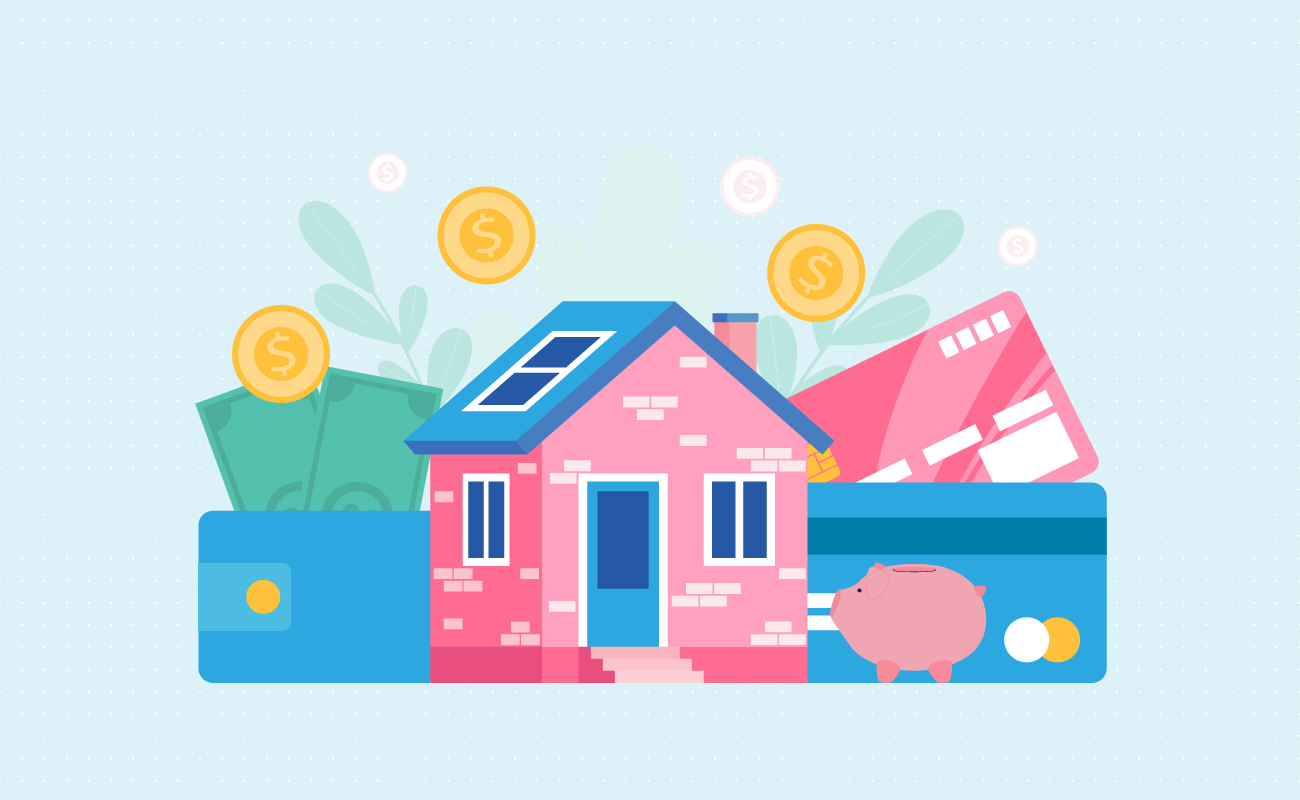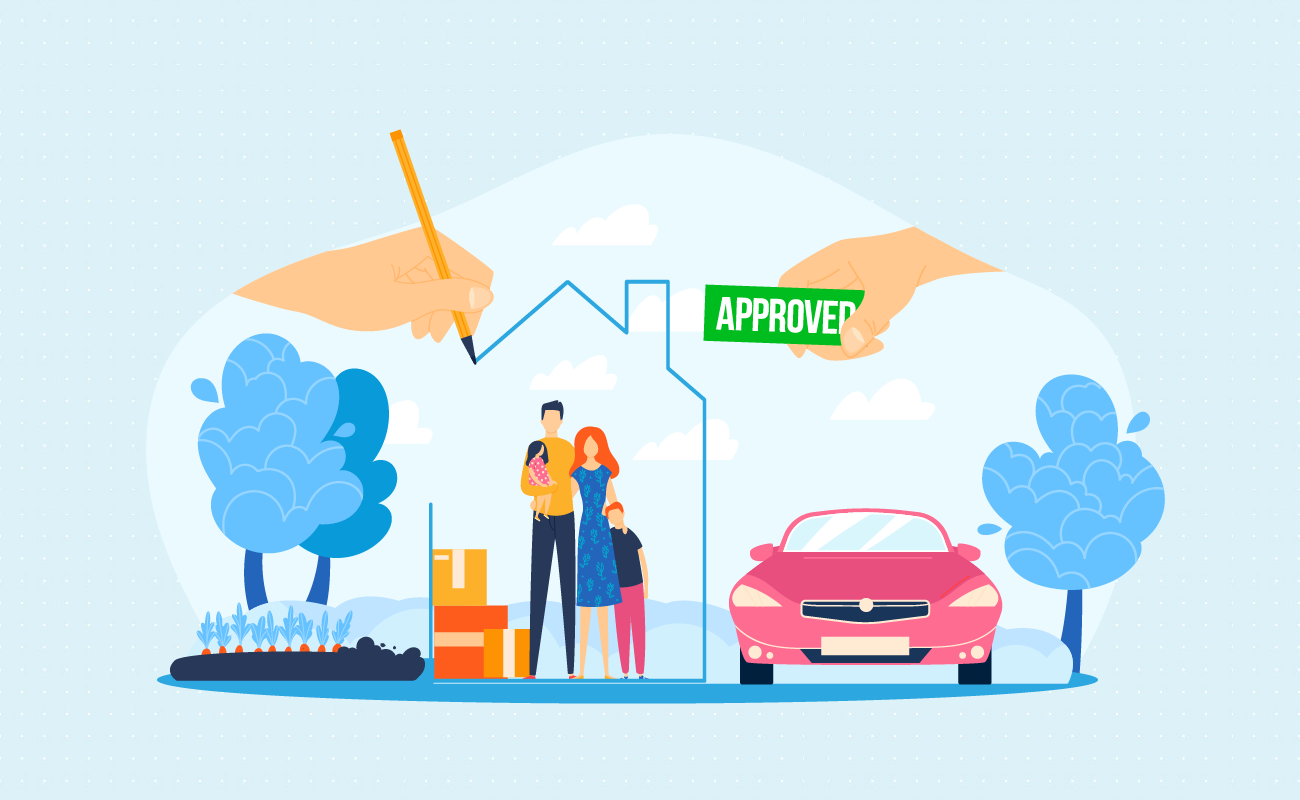Fixed Rates
30 yr
25 yr
20 yr
15 yr
10 yr
Compare Terms
Compare Rates
Real APR
Adjustable Rates
Qualification
Affordability
Renter Affordability
Rent vs Buy
Price per Square Foot
Jumbo
Home Sellers
 Monthly Housing Payment Affordability Calculator
Monthly Housing Payment Affordability CalculatorThis calculator helps home buyers estimate how much home they may be able to afford using standard qualification criteria including down payment percent, front end debt-to-income ratio and back end debt-to-income ratio. If the loan you are applying for does not have a down payment requirement enter zero in that field. If the loan you are applying for only looks at the loan's back end ratio then set the fornt end ratio limit to the same number as the back end limit.
Most mortgages where the buyer puts less than 20% down require property mortgage insurance until the home's loan-to-value (LTV) falls below 78%. If you put 20% down PMI should be set to zero. If you are using a VA loan (for veterans and active duty military) set the PMI rate to zero. The initial down payment you enter has closing costs subtracted from it. If you already have your closing costs set aside you can set the discount points, loan origination points and other closing costs to zero.
If you want to calculate affordability based on your current rental payments we also offer a rental equivalent mortgage calculator.
Guide published by Jose Abuyuan on October 30, 2020

Deciding to buy a home takes time and proper financial preparation. Besides improving your credit score to qualify for a mortgage, you need to gauge how much home you can realistically afford. This includes saving enough down payment, anticipating the closing costs, having cash reserves, and budgeting for monthly mortgage payments.
For starters, the list price is usually the first thing you notice when you look for a house. And depending on the type of home and where you want to live, it can get really expensive. Before you make major life purchases, it’s worth doing some research. You can maximize your savings by checking different loan options and understanding how your decisions can impact your finances.
Our guide will discuss how much people should save for a mortgage down payment, as well as the benefits of paying 20 percent down on your loan. We’ll also talk about different options if you need an affordable loan down payment. Then, we’ll include how much buyers typically spend on closing costs and the required cash reserves you should have to secure a mortgage. Finally, we’ll discuss when it makes sense to rent or buy a home.
The median sales price of new houses sold in September 2020 was $326,800, according to the U.S. Census Bureau. With such a large amount, you might be wondering how much down payment is required for a mortgage. And the more expensive a home, the higher your down payment can get.
Ideally, lenders would like to see a down payment of 20 percent on your mortgage. For example, if a house is priced at $326,800, you’ll need to save $65,360 for down payment. A 20 percent down indicates that you have a strong cash flow. It’s a sign that you can consistently save over time, being reliable with your finances.
In reality, however, a 20 percent down is unaffordable for most borrowers. More people make smaller down payments on their mortgage, especially first-time homebuyers with tight budgets. According to Experian, the National Association of Realtors found that the median down payment for all U.S. homebuyers in 2018 was 13 percent. Meanwhile, first-time homebuyers in 2018 only paid 7 percent down, and repeat buyers only spent as much as 16 percent down on a home.

The required down payment for mortgages vary per lender. While this amount depends on your credit rating, many conventional loan lenders require a minimum down payment of at least 5%. In other cases, government-backed mortgages such as FHA loans allow qualified borrowers to pay as low as 3.5% down on their mortgage.
Though it’s challenging to make a higher down payment, it’s worth saving a larger amount to maximize your savings. Here a several reasons you should pay 20 percent down on your mortgage.

Not everyone has high income or the luxury of time to save a large sum. It may also be harder to qualify for a traditional conventional mortgage, which typically requires a credit score of 680. And when you have a limited budget, it’s worth looking for affordable mortgage options in the market.
The good news is there are government-backed loans that come with low down payment options and lenient credit standards. Certain types of mortgages may even offer a zero down option (100 percent financing) if you qualify for the loan.
To score a low down payment, consider looking into the following types of mortgages:
Mortgages backed by the Federal Housing Administration are called FHA loans. These were created for low to moderate income homebuyers seeking low-cost mortgage options with relaxed credit requirements. Borrowers with a low credit score of 580 can qualify for an FHA loan. They are also entitled to a 3.5 percent down payment. For borrowers with credit scores between 500 to 579, you can still qualify for an FHA loan as long as you make a 10 percent down payment.
FHA loans can be obtained from private lenders such as banks, credit unions, and mortgage companies. While the credit standards are lenient, FHA loan borrowers are still encouraged to meet their lender’s requirements to secure favorable interest rates. Having a higher credit score and a larger down payment helps reduce your rate.
MIP is a mandatory insurance fee on FHA loans. This insurance protects your lender in case you fail to repay your mortgage. It also compensates for the low down payment option. It’s charged both as an upfront MIP fee and an annual fee. The upfront MIP fee is typically 1.75% of your base loan amount, while the annual MIP is 0.85% of your loan amount. This added expense can cancel any savings you make from affordable monthly payments.
Unlike PMI, MIP lasts for the entire life of 30-year FHA loans. Meanwhile, 15-year FHA loans require MIP that lasts for 11 years. While the down payment is affordable, this can make your mortgage more costly in the long-term. To eliminate MIP, many FHA loan borrowers consider refinancing into a conventional loan.
If you’re looking to live outside the city, consider taking a USDA loan. The U.S. Department of Agriculture provides mortgage guarantee programs specifically for homes in designated rural areas. This comes with a zero down payment option (100 percent financing) and a lower interest rate compared to conventional mortgages. Just like FHA loans, the USDA loan program can be obtained through private lenders.
To be eligible for a USDA loan, your credit score must at least be 640. If your score is below 640, you may still qualify. However, you must submit to more stringent underwriting procedures. This also means your application will take longer to approve.
Next, you must satisfy the required income limits. The USDA imposes income limits of no more than 115 percent of the median household income in an area. This depends on where you live and the number of people earning in your home. Household income is calculated by adding the borrower’s income together with every earning adult’s income in a household. To know the income limit in your area, you can check the USDA income limits page.
When you take a USDA loan, you are required to pay mortgage insurance in the form of a USDA guarantee fee. This obligatory cost is a trade-off for the zero down payment option. But of course, you still have the choice to make a down payment even though it’s not required.
The guarantee fee is paid both as an upfront fee and annual fee which is rolled into your monthly payments. The upfront guarantee fee is typically 1% of your loan amount, and the annual guarantee fee is 0.35% of your principal balance. The annual guarantee fee is reduced as your principal balance decreases. Like MIP, the annual guarantee fee is required for the entire duration of your USDA loan.
VA loans are mortgages specially issued to veterans, active military members, and qualified military spouses. These loans are backed by the U.S. Department of Veterans Affairs, which can be obtained from banks, mortgage companies, and credit unions.
The government created the VA financing program for returning military members who need assistance in affording a home. Often, it’s hard for military staff to build credit after years of service. With the help of the VA loan program, veterans and service members can secure home financing with low down payments and flexible credit standards.
Similar to USDA loans, VA loans come with a zero down payment option. They also have lower interest rates compared to conventional loans. But unlike other government-backed mortgages, VA loans do not charge mortgage insurance premium. However, borrowers are required to pay a VA funding fee. To qualify for a USDA loan, it’s ideal to have a credit score of at least 620.
When you obtain a VA loan, you’re required to pay a VA funding fee to offset the cost of the mortgage to U.S. taxpayers. It’s the trade-off you make for the zero down payment option and not paying mortgage insurance premium. This amount depends on your assigned VA funding fee rate, which is typically between 1.4% to 3.6% of your loan amount.
The VA funding fee can be paid as a one-time closing cost or rolled into your monthly payments. If you include it in your monthly payments, it will increase your loan amount. The VA funding fee rate also varies per borrower. It depends on the size of your loan, down payment, and the type of VA financing you obtain. Note that the VA funding fee increases if you’ve previously used your VA benefit, which makes your loan more costly.

You can lower your VA funding fee rate by making a small down payment. Though a zero down option sounds favorable, you’ll end up with larger monthly payments and interest charges if you don’t make a down payment at all. When you pay at least 5%, it will considerably reduce your VA funding fee rate.

Furthermore, there are conventional loan options the offer affordable down payments, such as the following:
The HomeReady Mortgage program is a line of conventional loans provided by Fannie Mae. These are specifically geared towards low to moderate income borrowers and people in disaster-impacted communities. The minimum down payment requirement is 3 percent, allowing you to have 97 percent LTV. This makes it a practical option if you have limited funds. It also reduces your mortgage insurance, allowing you to cancel it at 80 percent LTV.
Qualified borrowers must have an income that’s below 100 percent of their area’s median income. You must also have a credit score of at least 620 to be eligible for the loan. A HomeReady Mortgage accepts cash gifts and grants as down payment. If you’re getting help from relatives and friends, this loan makes it easier to gather your funds.
A Conventional 97 Mortgage is another type of government-sponsored enterprise (GSE) loan. It’s offered by Freddie Mac and Fannie Mae and comes with a minimum down payment of 3 percent (97 percent LTV). It also has flexible payment processing, allowing you to make a down payment entirely from gift funds. Again, if you’re gathering down payment from friends and family members, this is a viable option. Once you build 20 percent home equity, the lender allows you to cancel mortgage insurance.
To be eligible for a Conventional 97 Mortgage, your credit score must be 620 or higher. If you’re applying for a mortgage with a spouse or co-borrower, at least one of you must be a first-time homebuyer. A first-time homebuyer is someone who has not owned a home within 3 years of applying for a Conventional 97 loan.

If you’ve gathered enough down payment, you might think you’re all set to buy house. But no so fast. In reality, lenders may require more cash before approving your loan. Thus, you need mortgage reserves (cash reserves) as proof that you can meet your loan obligations. In case you lose your job or experience reduced income, cash reserves function as emergency funds that enable you to keep paying your mortgage .
The amount required for mortgage reserves is measured in months. Most banks require at least 2 months’ worth of loan payments (including property tax and insurance) in liquid reserves. Assets that can easily be converted to cash are referred to as liquid reserves.
For example, let’s suppose your monthly mortgage payment including property tax and insurance is $1,800. This means you’ll need $3,600 in liquid reserves, which covers mortgage payments for 2 months. If you cannot present this amount, your loan application may not be approved.
The precise amount of cash reserves you’ll need is determined by the type of loan you get, your credit score, and your loan-to-value ratio (LTV). Therefore, it’s wiser to have several months of cash reserves at hand. And depending on your lender, you may be required to present at least 6 to 12 months of cash reserves.
The table below details the required mortgage reserves per loan type:
| Loan Type | Required Mortgage Reserves |
|---|---|
| Conventional Loans | 0 – 6 months, depends on credit score, DTI ratio, and LTV ratio |
| FHA Loans | Usually required for 3 or 4 unit homes Must cover at least 3 months |
| USDA Loans | Does not require mortgage reserves But can be used as a compensating factor if needed |
| VA Loans | Does not require mortgage reserves for primary single family homes Unless it’s a 3 or 4 unit home and you’re using rental money to qualify, you’ll need 3 – 6 months of reserves |
What qualifies as mortgage reserves? Cash in savings or checking accounts are accepted as cash reserves. Lenders also take the following sources of liquid reserves:

You can use borrowed money as a mortgage reserve only after 2-3 months. When you affirm a personal loan as debt, the lender considers its payment in your debt-to-income ratio. You can then count the earnings of that loan in your savings. Once this happens, the funds are regarded as “seasoned assets.”

Besides cash reserves and down payment, you must be prepared to factor in your closing costs. Closing costs are fees you pay your lender to process your mortgage. This typically ranges between 2 percent to 5 percent of the loan amount.
For example, if your loan is worth $350,000, your closing fees can be anywhere between $7,000 to $17,500. This is another large expense, so be sure to budget extra funds apart from your down payment. It’s also worth negotiating with your lender to reduce your closing costs.
ClosingCorp reports that the average national closing cost for a single-family home in 2019 was $5,749 with taxes, and $$3,339 excluding taxes. Based on the same data, the following table shows the national average mortgage closing costs per state in 2019.
| State | Average home sale price | Average closing costs with taxes | Average closing costs without taxes | Percentage of home sale price |
|---|---|---|---|---|
| District of Columbia | $645,108 | $25,800 | $5,723 | 4.00% |
| Delaware | $281,308 | $13,273 | $3,350 | 4.72% |
| New York | $421,836 | $12,847 | $5,612 | 3.05% |
| Washington | $433,404 | $12,406 | $4,538 | 2.86% |
| Maryland | $325,234 | $11,876 | $3,737 | 3.65% |
| Pennsylvania | $206,405 | $10,076 | $4,059 | 4.88% |
| Connecticut | $321,609 | $7,091 | $3,489 | 2.20% |
| Hawaii | $646,019 | $6,746 | $5,388 | 1.04% |
| California | $622,881 | $6,537 | $5,064 | 1.05% |
| Florida | $280,389 | $6,457 | $3,569 | 2.30% |
| New Hampshire | $274,653 | $6,271 | $2,485 | 2.28% |
| New Jersey | $359,349 | $6,012 | $3,635 | 1.67% |
| Vermont | $231,934 | $5,994 | $2,934 | 2.58% |
| Massachusetts | $497,429 | $5,964 | $3,876 | 1.20% |
| Virginia | $330,371 | $5,959 | $3,282 | 1.80% |
| Illinois | $238,982 | $5,609 | $4,502 | 2.35% |
| Nevada | $331,296 | $5,546 | $3,851 | 1.67% |
| Rhode Island | $318,095 | $4,527 | $2,912 | 1.42% |
| Utah | $363,324 | $4,026 | $4,026 | 1.11% |
| Michigan | $172,599 | $4,014 | $2,716 | 2.33% |
| Oregon | $356,408 | $3,969 | $3,612 | 1.11% |
| Minnesota | $248,296 | $3,785 | $2,434 | 1.52% |
| Tennessee | $213,455 | $3,745 | $2,575 | 1.75% |
| Texas | $274,163 | $3,744 | $3,744 | 1.37% |
| Colorado | $424,479 | $3,672 | $3,593 | 0.86% |
| Georgia | $231,593 | $3,658 | $2,792 | 1.58% |
| Maine | $259,925 | $3,654 | $2,543 | 1.41% |
| Arizona | $296,978 | $3,631 | $3,631 | 1.22% |
| Alaska | $300,079 | $3,517 | $3,517 | 1.17% |
| West Virginia | $158,063 | $3,384 | $2,483 | 2.14% |
| Louisiana | $193,364 | $3,365 | $3,040 | 1.74% |
| Ohio | $165,732 | $3,360 | $2,846 | 2.03% |
| South Carolina | $228,866 | $3,316 | $2,402 | 1.45% |
| Idaho | $290,099 | $3,063 | $3,063 | 1.06% |
| Oklahoma | $152,272 | $2,997 | $2,631 | 1.97% |
| New Mexico | $258,857 | $2,908 | $2,908 | 1.12% |
| North Carolina | $237,867 | $2,839 | $2,308 | 1.19% |
| Montana | $292,942 | $2,773 | $2,773 | 0.95% |
| Wisconsin | $195,654 | $2,615 | $2,158 | 1.34% |
| Arkansas | $160,261 | $2,562 | $2,056 | 1.60% |
| Mississippi | $224,323 | $2,548 | $2,548 | 1.14% |
| Kansas | $236,909 | $2,459 | $2,459 | 1.04% |
| Wyoming | $283,881 | $2,430 | $2,430 | 0.86% |
| North Dakota | $214,782 | $2,428 | $2,428 | 1.13% |
| Alabama | $174,247 | $2,416 | $2,198 | 1.39% |
| Nebraska | $189,620 | $2,303 | $1,952 | 1.21% |
| Kentucky | $172,637 | $2,276 | $2,126 | 1.32% |
| Iowa | $172,227 | $2,194 | $1,954 | 1.27% |
| South Dakota | $181,137 | $2,159 | $2,002 | 1.19% |
| Missouri | $202,572 | $2,063 | $2,063 | 1.02% |
| Indiana | $193,284 | $1,909 | $1,909 | 0.99% |

In 2018, the U.S. median rental payment per month in the U.S. reached $1,500, according to data from HotPads Rent Report. This was only slightly lower than the median monthly mortgage payment in 2018, which was $1,556, according to the U.S. Census Bureau’s American Community Survey.
Depending on where you’ll rent or buy, locations such as bustling cities and coastal states usually have high rental and mortgage prices. To build your savings, make sure to look for a reasonably priced apartment or condominium unit. Likewise, if you want to maximize interest savings on your mortgage, it’s worth choosing a house in a more affordable area.
Why do rent prices get higher? FortuneBuilders notes that when rent increases, fewer people are buying homes in an area. This means many people are turning to the rental market to fulfill their housing needs. As a result, more demand for rental properties allow landlords to increase prices, keeping up with national mortgage values.
The highest rental markets remain to be cities with high populations and job growth. Research published by Zumper in January 2020 shows the top 10 U.S. cities with the highest average rent. Cities with the most expensive average rental costs were San Francisco, New York, and Boston. See the full table below.
| City | Rent, 1 BR | Rent, 2 BR |
|---|---|---|
| San Francisco, CA | $3,500 | $4,500 |
| New York, NY | $3,000 | $3,390 |
| Boston, MA | $2,590 | $2,930 |
| Oakland, CA | $2,500 | $3,000 |
| San Jose, CA | $2,450 | $2,910 |
| Los Angeles, CA | $2,260 | $3,060 |
| Washington, DC | $2,260 | $3,040 |
| Seattle, WA | $1,890 | $2,340 |
| San Diego, CA | $1,790 | $2,390 |
| Miami, FL | $1,740 | $2,250 |
But note that not all metro areas have expensive rent. Based on the same data, the average rent in large cities like Dallas, TX, was $1,160 for a 1 bedroom unit, while rent in Phoenix, AZ was $980 for a 1 bedroom unit. It still depends on where you reside. If you can choose where to rent, it’s best to select a more affordable city.
On the other hand, when you buy a house, monthly mortgage payments are much more expensive in coastal states where you pay a premium for the space. In these areas, mortgage payments are usually much higher than the median national payment.
Moreover, mortgage rates vary between states. Apart from the housing national market, the local economy impacts mortgage rates. Rates tend to get higher when unemployment and foreclosures are prevalent in an area. Thus, it’s best to avoid areas with high occurrence of foreclosure. Lenders are likely to give you a higher mortgage rate in these places.
In February 2020, ATTOM Data solutions released a list of U.S. states with the most foreclosures. The following states have the highest foreclosure filings according to the report:
Next, the following table lists the top 10 U.S. states with the most expensive median mortgage payments. This data was based on 2018 American Community Survey reported by Business Insider. The top 3 states with the costliest median mortgage payments were California, Hawaii, and New Jersey.
| State | Median monthly mortgage payment |
|---|---|
| New Jersey | $2,439 |
| Hawaii | $2,350 |
| California | $2,282 |
| Massachusetts | $2,165 |
| New York | $2,114 |
| Connecticut | $2,096 |
| Maryland | $1,987 |
| New Hampshire | $1,917 |
| Alaska | $1,907 |
| Rhode Island | $1,838 |
*Based on the data, you’ll notice that New Jersey and Maryland both have high foreclosure occurrence and expensive median mortgage payments.
Furthermore, here’s how median mortgage payments stack up in the most populated U.S. cities. In the table below, the cities with the most expensive median mortgage payments were New York, Los Angeles, Riverside County, and Chicago. Cities with large populations and job growth tend to have higher monthly mortgage payments.
| City | Median monthly mortgage payment | Median home cost |
|---|---|---|
| New York City, NY | $2,709 | $460,900 |
| Los Angeles, CA | $2,573 | $658,600 |
| Riverside County, CA | $1,900 | $380,800 |
| Chicago, IL | $1,847 | $256,700 |
| Miami, FL | $1,810 | $317,800 |
| Dallas, TX | $1,779 | $258,300 |
| Houston, TX | $1,727 | $225,200 |
| Phoenix, AZ | $1,492 | $277,900 |

Because homeownership involves ample financial preparation, not everyone can afford to buy a house right away. And depending on your lifestyle and career choices, you may not be ready to find a long-term home just yet. In the meantime, many individuals and families choose to rent for affordability. It’s also a flexible option in case they need to move in the near future.
Renting makes more sense when you’re young and anticipating many life changes. People who are building careers tend to move to big cities. Others might change jobs, which require them to move again after a couple of years. Around 50 percent of renters in the U.S. are below the age of 30, according to the National Multifamily Housing Council. It’s a sensible option when you’re building your career and income. Just make sure you can afford a reasonable amount of rent.
Renting should ideally be more affordable than homebuying, which is a practical option if you’re still planning to get married or have a family. It provides you more time and cash flow to save income for major life expenses. In other cases, people rent to reduce their living costs and manage their debts. It’s a viable option for single parents and people going through an expensive divorce.
On the other hand, the trade-off is you have to abide by your landlord’s rules. If rent increases, you have to pay a larger amount. If your landlord suddenly decides to sell the property, you have to move. Finally, you don’t own property or gain home equity when you make payments.
When should you buy a home? Sometimes the cost of rent may match the monthly mortgage payments in your area. When this happens, you should consider moving to a more affordable location. On the other hand, if you’ve decided to stay in the neighborhood for the long-term, it’s time to buy a house. Just make sure you can afford the long-term costs.
Unlike buying a house, you don’t need to worry about added expenses such as property taxes, mortgage insurance, and maintenance costs. Maintenance costs alone include heating and cooling repairs, plumbing, and electrical maintenance. Moreover, you don’t even have to worry about homeowner’s insurance. These are all your landlord’s responsibilities. Unless you damage anything in your rental property, you don’t have to shoulder any of these costs.
When you’re renting, you don’t pay mortgage interest, which makes homebuying more costly. And the longer the loan term, the larger your interest payments can get over the life of the loan. This is why it’s crucial to be financially prepared before buying a house.
If you’re keeping your house for the long haul, buying is a good investment. Unlike renting, you eventually own your property and pay off your debt. This adds to your wealth. Renting, on the other hand, involves money you pay to someone else. You could have invested that money into owning your property.
Let’s say you’re ready to buy a house. It’s important to know around how much your current savings and income can afford. Though this takes complex calculations, you can use our calculator above to easily estimate the home price you can potentially qualify for.

Lenders evaluate your DTI ratio, which is the percentage of your total monthly debt payments compared to your gross monthly income. Keeping this ratio low increases your chances of loan approval. It also helps you qualify for a larger loan amount. Lenders impose DTI limits to determine if you are eligible for a mortgage.
There are 2 types of DTI ratios:
Now, let’s take the example below. Suppose you and your spouse are planning to get a 30-year fixed-rate mortgage with a 3 percent APR. Individually, you both have an annual income of $60,000, and your monthly debts amount to $1,600. You’ve saved around $80,000 for your down payment and closing costs. Other closing costs, property taxes, and homeowner’s insurance are listed below.
The required minimum down payment is 5 percent of the home price. The front-end DTI limit is 32%, while the back-end DTI limit is 43%. Let’s see the results below.
30-Year Fixed-Rate Loan
Your annual income: $60,000
Your Spouse’s annual income: $60,000
Monthly debt payments: $1,600
Down savings before closing costs: $80,000
Rate (APR): 3%
Discount points: 1
Loan origination points: 1
Annual property taxes: $2,500
Annual homeowners insurance: $1,200
Minimum down payment: 5%
Front-end DTI limit: 32%
Backend DTI limit: 43%
| Loan Details | Results based on Back-end DTI |
|---|---|
| Estimated qualifying loan amount | $470,954.68 |
| Home price associated with back end limit | $538,409.13 |
| Down payment after closing costs | $67,454.44 |
| Monthly principal & interest | $1,985.56 |
| Max monthly cost of homeownership | $2,700.00 |
| Monthly debt & housing expense limit | $4,300.00 |
Based on the table above, if your limiting factor is your back-end DTI, your estimated qualifying mortgage amount will be $470,954.68. This is the maximum home loan you can qualify for. The home price you can afford will be around $538,409.13. Meanwhile, your down payment after closing costs will be $67,454.44. Your monthly principal and interest payment will be $1,985.56.
Using this calculator, you can plan your budget around your estimated loan amount and monthly mortgage payment. This can also tell you if you should increase your savings or income to qualify for a larger loan.
*Note that this is just an estimate. Your actual loan limit will depend on qualifying factors such as your credit score and other compensating factors when lenders evaluate your application. The result is based on the back-end DTI entered above. You can change the limits depending on market conditions and information from lenders.

Gauging how much home you can afford is an important step before securing a mortgage deal. By assessing your finances and checking different loan options, you can find the right loan that suits your budget. You should also give yourself enough time to save down payment and improve your credit score before buying a house.
Ideally, borrowers are encouraged to pay 20 percent down to eliminate private mortgage insurance costs for conventional loans. Making a higher down payment is also more attractive to lenders because it reduces their credit risk. If you cannot afford a full 20 percent down, many conventional lenders allow a minimum of 5 percent as long as you have a good credit profile.
Moreover, you can take government-backed loans which have low down payment requirements and flexible credit standards. For instance, FHA loans allow you to make a 3.5 percent down payment if your credit score is at least 580. Other government-backed loans such as USDA and VA loans offer a zero down payment option. However, be warned: Not making a down payment makes mortgage more expensive in the long run. Make sure to make a small down payment to lower your monthly mortgage.
Besides the down payment, you need to present liquid assets or mortgage reserves. It’s also important to factor in closing costs, which is typically 2 percent to 5 percent of your loan amount. Finally, take time to think about your long-term plans. If you’re bound to move within several years, it might make better sense to rent for a while. On the other hand, if you’re settling down with a growing family, it’s more advantageous to purchase your own home.
Still torn between renting or buying a house? Read our guide on our rent vs. buy calculator.
Jose Abuyuan is a web content writer, fictionist, and digital artist hailing from Las Piñas City. He is a graduate of Communication and Media Studies at San Beda College Alabang, who took his internship in the weekly news magazine the Philippines Graphic. He has authored works professionally for over a decade.